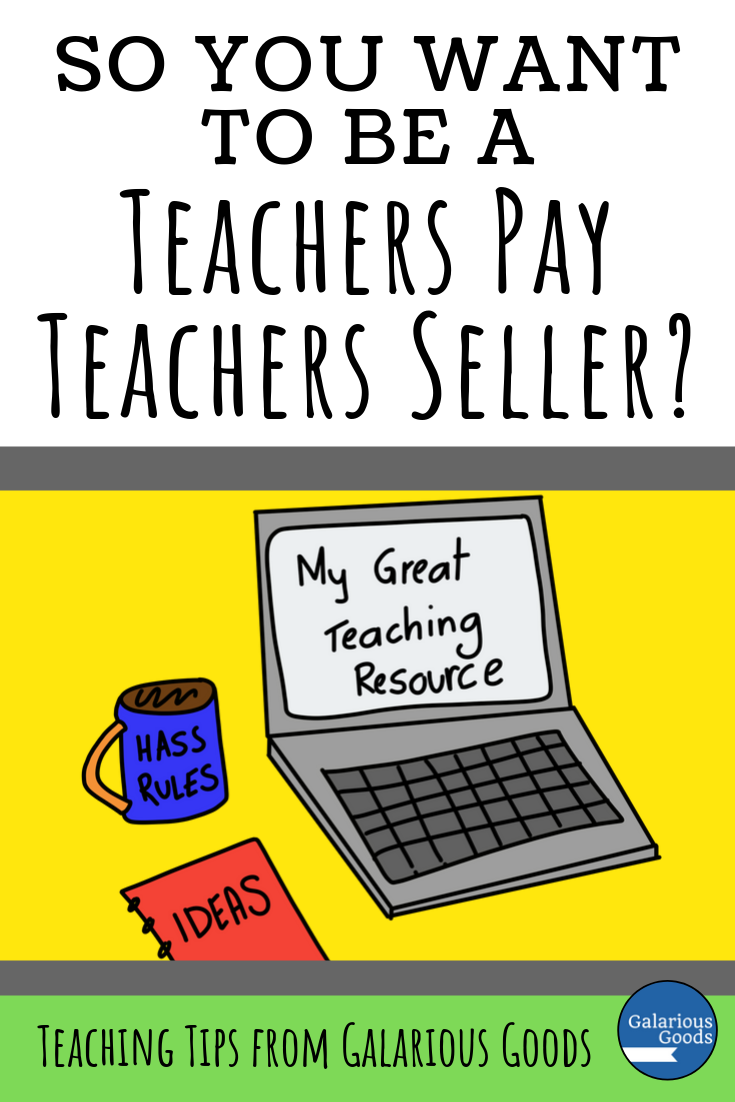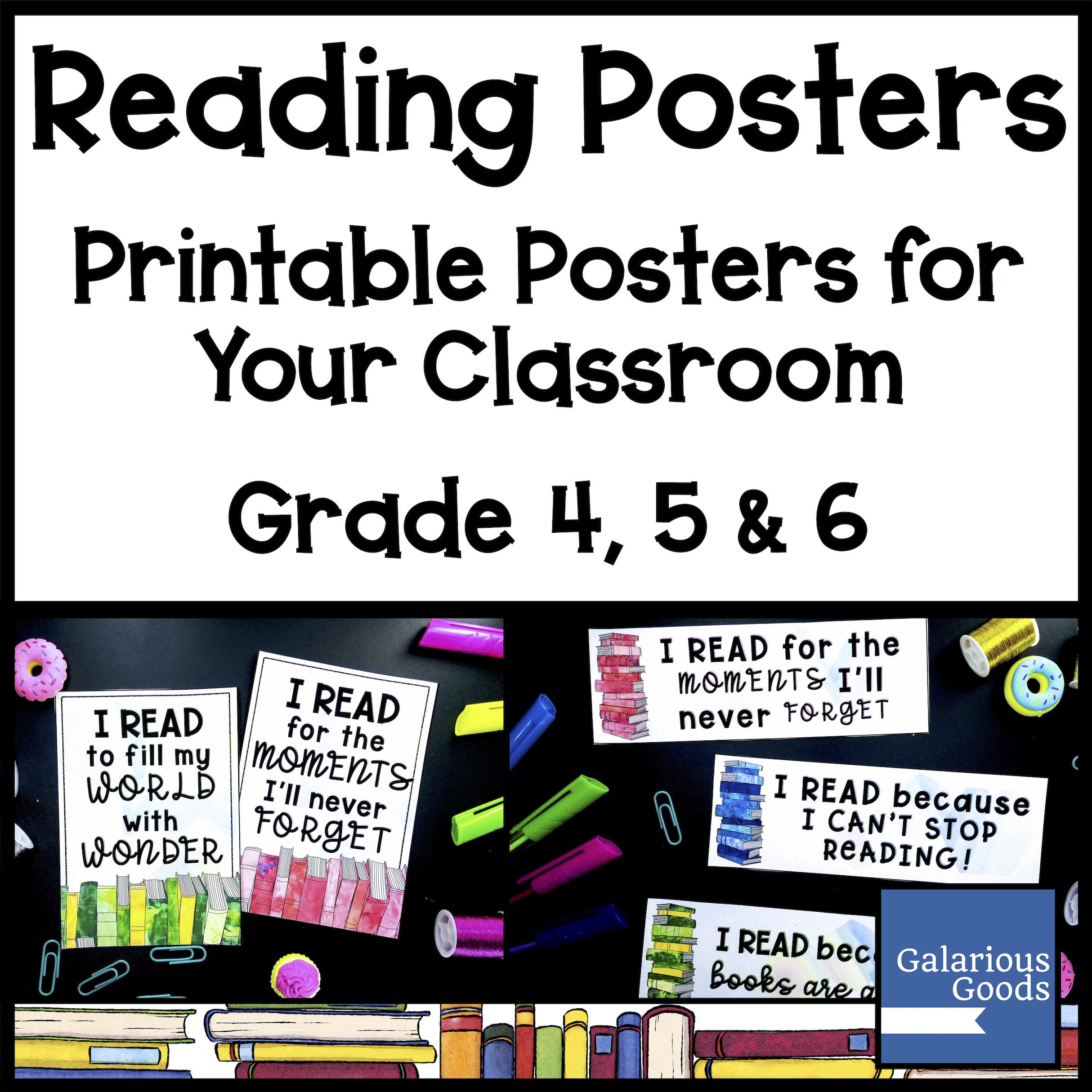So You Want To Be a Teachers Pay Teachers Seller?
/Maybe you love creating engaging resources for your classroom which your students adore. Or you’ve had great success with a particular resource which has all your colleagues talking. Or you’ve got a bit of a following on Instagram and those followers are super enthusiastic when you show them your latest resources.
It’s time to monetise that interest and passion and get on Teachers Pay Teachers.
But - wait a moment - how can you make sure you're doing the right things when it comes to an unfamiliar venture? How can you avoid some big mistakes when it comes to Teachers Pay Teachers?
Teachers Pay Teachers (TpT) is probably the biggest educational marketplace around. It attracts resource creators from around the world, creating everything from high quality, technological wonders, to engaging hands on classroom materials to worksheets quickly whipped up when a need was recognised.
If makes sense that a teacher who is passionate about creating resources would want to be involved in TpT. But, as a Teacher Seller with a number of years of experience, I’ve seen a rapid increase of new sellers who are unprepared, unprofessional, or - worst of all - are breaking the law as they step into the TpT world.
The good news is that there are ways to avoid that! Here’s some tips to help you avoid the most common pitfalls when it comes to TpT!
1. Check Your Employment Conditions
You’ve just made a new resource and you’re ready to post it on TpT . . . but wait! Does your job allow you to do that?
Your employer - the state, school district, religious educational authority or private school - probably had you sign a contract when you started teaching. Some of those contracts prohibit you from taking on other work. Others require you to get permission - from your Principal or the district or someone else - to engage in other work. Other employers may regard the resources you make to be their property, so you aren’t allowed to sell them. Or they might ask you to ensure that you restrict all TpT work to personal computers and personal time.
This is a really important thing to consider when you’re thinking about becoming a seller. Selling on TpT will take a lot of work - it can be years before you replace an annual income. You don’t want to be out of a guaranteed income because you unwittingly broke the terms of your contract.
Takeaway: Check your employment conditions and see if you can be a seller - and if you need permission to do so.
2. Register your Business
(Note: I’m approaching this tip from the Australian perspective - but it’s important to check if you need to do this if you live in other parts of the world!)
Did you know that you need to register your business name in Australia - unless you’re operating under your own name? The good news is that it’s a really easy online process and it’s very affordable. (You can read more here)
You might think that it wouldn’t apply to you if your business was only a hobby. It’s important to know that if you intend to make any profit, if you regularly carry out activities in the business - even setting up as a seller on TpT! - can qualify you as a business.
(You will also have tax obligations for any income you make from TpT - an accountant is the best person to talk to for more information)
Takeaway: Register your business if you’re required to - and make sure you keep receipts and paperwork!
3. Check Your Trademarks and Copyright
These are probably the biggest errors made by new sellers - and the ones which can get you in the deepest trouble.
First a note on terminology - copyright is the legal right for the creator of text, songs, images, photographs, films etc to determine who reproduces that work. Trademarks are symbols or words which are registered as representing a company or organisation - and only that company or organisation can decide who uses them. For example - the words and images of The Very Hungry Caterpillar are covered by copyright law, Eric Carle’s name is trademarked and cannot be used under trademark law.
New sellers may break copyright laws if they don’t take care with the images they use in their products. The creator (or owner, in some cases) of the image decides who can use the image. This means you cannot just save images from Google, from other websites or from social media to use in your resources without permission. This also applies to free resources.
(If you’re looking for images you can use, check out the fabulous and affordable clip artists on TpT or search for public domain images (make sure you check the terms of use for those images) or seek permission from the copyright owner)
As for trademarks . . . well lots of things are trademarked. Many popular brands are trademarked and cannot be used within resources. Author’s names might be trademarked and many educational programs are also trademarked. There are some great resources in the TpT forums and TpT University which will give you more information as well as searchable registers - but unless your work is completely your own, make sure you do your research. Trademark owners have the right to challenge your work and have it removed - and they often do.
Takeaway: Have a good understanding of copyright and trademarks - and do your research when you create new resources.
4. Be Original
You’ve seen a fabulous looking TpT resource on social media or in a shop and you know you can make something just like it. You’ll just change the words a bit and make it with images you like . . .
Don’t. Do. It.
Copying another seller is a deeply unethical thing to do. TpT is also a relatively small community and other sellers (and buyers) will notice if you do this - especially if you do it regularly. You’re also not producing the best possible resources - the best resources come from your own imagination, your own research and your own experiences.
Takeaway: Be your own fabulous self - it’s the best way to create resources and develop an audience.
5. Be a Professional - Treat your TpT shop like the business it is
It’s important, when it comes to TpT, to behave like you would in any other secondary income job. Real teachers will spend real money in your TpT store and by behaving as a business owner, you show them the respect they deserve as your customers.
What does that mean for you? It means being honest and just in your dealings with buyers - make sure the resources are of a high quality; take care to follow copyright and trademark laws; offer work that is original and thoughtful.
It means being kind to your buyers by letting them know what they are getting for their money. The best (and easiest) way to do this is by having comprehensive descriptions and previews of your work. (This is also good business sense! People are more likely to buy when they know what they’re getting!)
It means pricing appropriately. Do some research around pricing; read posts in the forums or in various Facebook groups. Ask a TpT friend for advice if you’re really stuck. Think about what value your resource has to the buyer, rather than how much time you put into it (especially in the beginning when everything takes a loooong time). Follow TpT guidelines on free resources and sales.
And - a note on freebies. Don’t use TpT as a host for your free resources. They make the money to employ staff and maintain the website through sales. A percentage of $0 is always going to be $0. If you only want to offer free resources, create your own blog or website or Facebook page or email list where you can give them away.
















